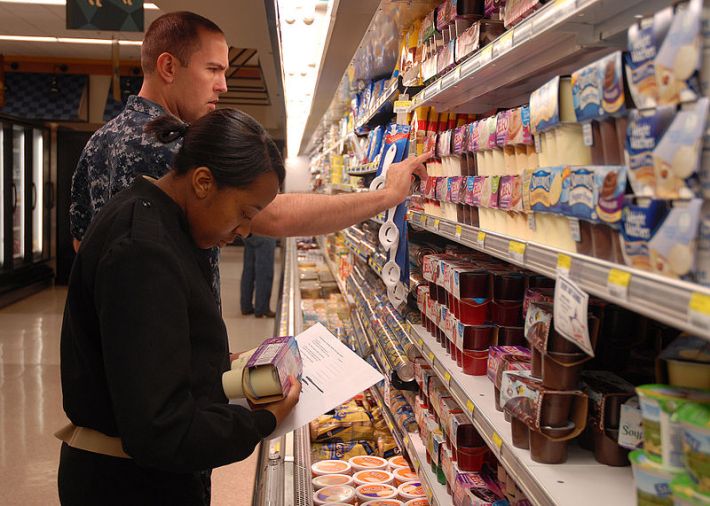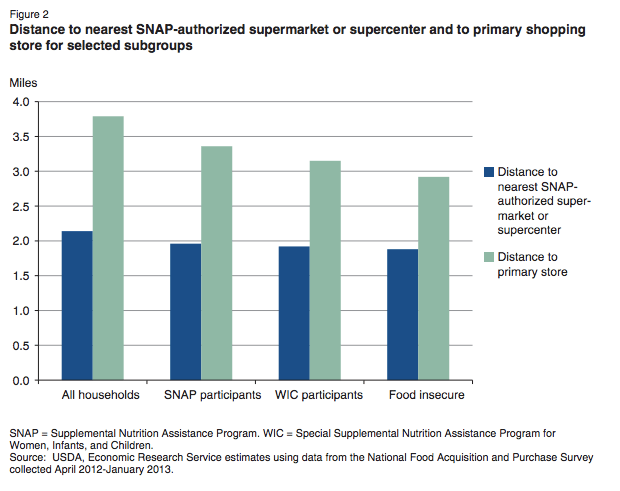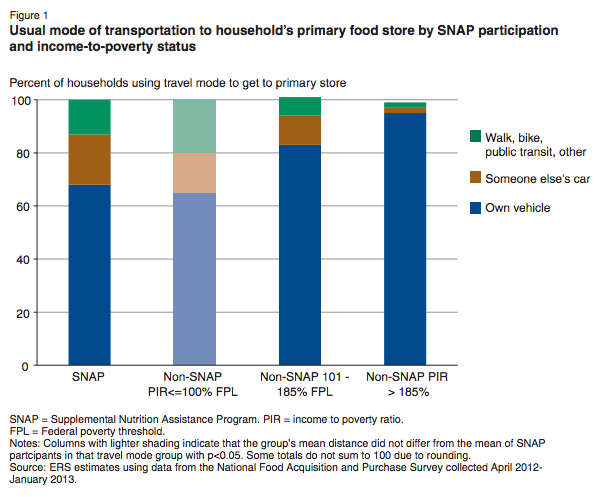
The links between transportation, development patterns, and people's access to healthy food are under increasing scrutiny from policy makers trying to address America's obesity epidemic.
Here's some new data that sheds light on Americans' access to fresh food. The USDA recently completed the first "National Household Food Acquisition and Purchase Survey," which delves into where people buy their food and how they get there.
Here are the major findings:
Most people drive their own car to the grocery, but lower-income households are more likely to rely on transit or a ride
Across all income groups, 88 percent of Americans drive the family car to pick up the groceries.
However, people who use government food assistance like WIC or SNAP -- as well as people who don't participate but qualify based on income guidelines -- were more like to rely on transit, walking, biking, or a ride from a friend or family member:
Among people who collect SNAP benefits, 68 use their own car to drive to the store, compared to 95 percent of households that earn too much to qualify for SNAP.
Among families who indicate some degree of "food insecurity," or difficulty acquiring sufficient food to sustain good health, only 70 percent drive their own car to the grocery. For families considered "food secure," the figure was much higher: 91 percent.
To access food, low-income households rely more on rides from friends than on transit, walking, or biking.
Even among people who don't own a car, the survey revealed a high level of dependence on driving to get groceries. Among households receiving SNAP benefits, 19 percent relied on a ride in someone else's car to get groceries, compared to 13 percent who rely on transit, biking, or walking.
USDA doesn't speculate about why this may be. But it could indicate a few things: development patterns that spread grocery stores too far apart; transportation systems that don't provide good access via transit, biking, or walking; and the nature of carrying groceries, especially if you do lots of shopping in one trip. It's probably a combination of all three.
People don't shop at the closest store

In a somewhat surprising finding, people don't shop at the closest grocery store, by and large. The average household traveled 3.79 miles to their primary grocery, even though the closest store was 2.14 miles way. This was true, with little variation, across all income groups. USDA says this indicates shoppers are sensitive to price, quality, and selection in addition to proximity.
People who walk, bike, or ride transit travel shorter distances
Not surprisingly, people who get food via walking, biking, or transit travel shorter distances to get to the store. Their average grocery trip is just under a mile, compared to about four miles for those who use their own vehicles. This is a reflection of development patterns: People who don't drive to shop for groceries live, on average, about half a mile from a store, compared to 2.27 miles for people who rely on their own cars.
Most people shop at "supercenters" or supermarkets
Almost 90 percent of shoppers reported their primary grocery store is a supercenter -- like a Walmart or Costco -- or a supermarket, with a roughly evenly split between the two. Another 5 percent reported they do their food shopping at "other retailers" like dollar stores. Among food insecure households, that figure was higher, at 9 percent, but slightly lower for households receiving SNAP benefits.






